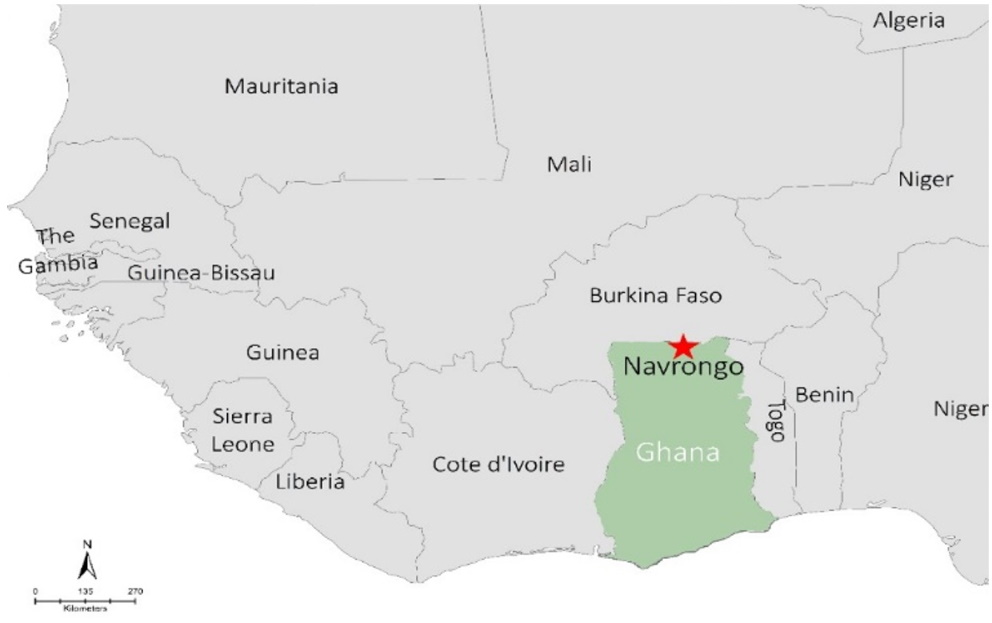
Agriculture in Navrongo, Ghana (Figure 1), is predominantly characterized by low-input rain-fed smallholder farming shallow soils that are also poor in fertility. The dominant cropping system is cereal–legume based, with the main crops being sorghum, maize, millet, peanut, and cowpea.
Livestock also plays an important role in the farming system, serving as draught power as well as manure source for soil amendment. Crop residues are important feed stocks for the livestock.
The current agricultural system, with less than 50 kg/ha nitrogen application rate to cereals leads to relatively low yields of less than 2000 kg/ha. The legumes do not receive fertilizer application and yield about 1000 kg/ha.









